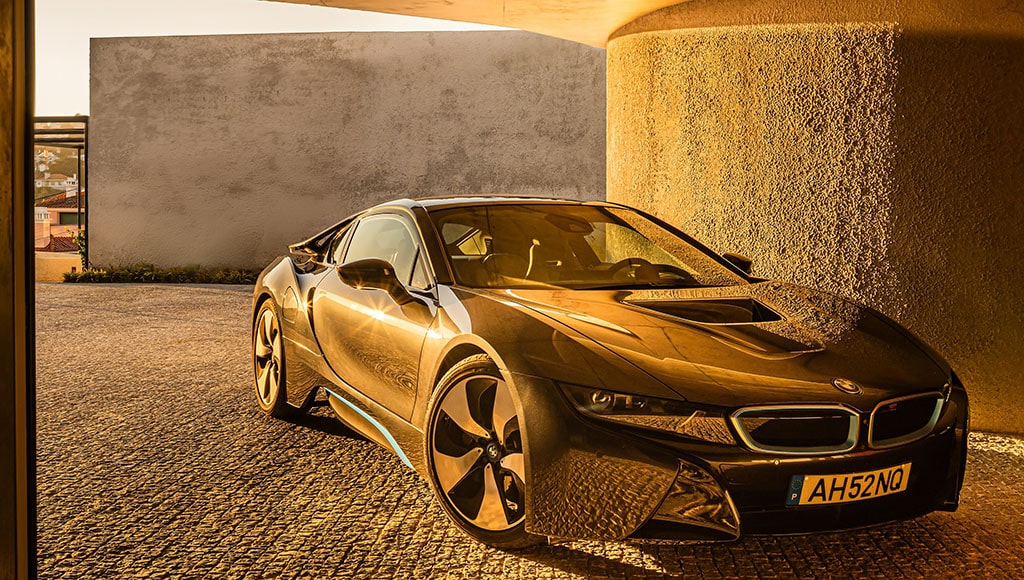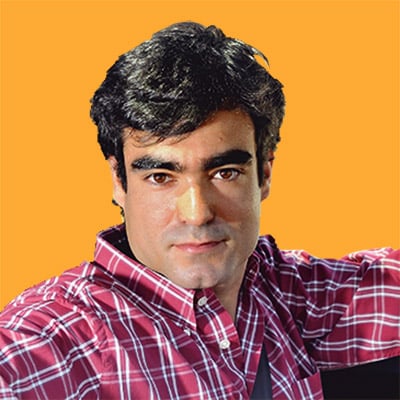It is the first time there is one picture and one picture alone in this page. But with good reason. Please read on.
They say a motoring journalist is never on holidays. Okay, I just made that up, but there is some truth to it. Although I am away with the family, trying to disconnect from daily life, I am still always thinking about cars.
It’s a different time of the year and I wanted to write about something different. I wasn’t sure about what, so I procrastinated a bit; then procrastinated a bit more. Thankfully, my strategy paid off when my friend Fernando Guerra sent me some pictures he had taken of his BMW i8.
It brought me two subjects I felt like talking about. The first one being Fernando himself; the second, logically, the car.
Fernando Guerra is an architect, but it has been a long time since he sat down to create any kind of building. Instead, he discovered his true calling is photography. Architectural photography, obviously. Now, I am not an impartial judge here, so me saying he is the best in the world is pointless; he is my friend, and I am always in awe of what he is able to do with a camera.
However, if you google his name, you will easily discover I am not alone. There are other people, more knowledgeable, more relevant to the matter, who also think very highly of him. It’s not an overstatement to say he will be in any list of the 10 best architectural photographers in the world.
More an artist than a technician, Fernando can see what others cannot and then freeze that vision in an image that, more times than not, seems more akin to a painting than a collection of pixels. His website and Instagram page are well worth a visit.
Anyway, when he is not traveling the world for work, Fernando is obsessing about two things: watches and cars. We met at the launch of the Porsche 991, in the Alentejo region, back in 2011, when he tagged along with another fellow journalist without being invited, because he wanted to see the car first-hand (true story) and, when the Porsche people felt too embarrassed to send him on his way, they let him ride in the back of one of the cars.
It just so happened the pictures he took that day and offered Porsche as a thank you were better than even the official ones the German brand had showed the public a few weeks before – and thus he became the unofficial Porsche photographer for Portugal, attending events and shooting the cars in between his actual job, whenever he can. His pictures are often used worldwide by Porsche AG.
Fernando has had a curious collection of cars through the years – from a BMW E46 M3 to an Audi RS2, a Porsche 993 Targa or a 1970 Fiat 500 he keeps at his atelier as a momentum of good design. The last one he bought was a BMW i8.
Now, whatever you may think of the car or how it looks, let me ask you this: have you ever seen a more beautiful picture of a car than the one printed on this page? I haven’t. I have seen pictures as beautiful as this one, but more beautiful? Sorry, no. And I look at car pictures for a living.
When he sent it to me, I thought it deserved to be seen. And not on some 15x8cm screen, but on an actual page. In print.
Which also qualified as a good excuse to reminisce about one of the greatest cars of the 21st century so far, the BMW i8. Launched in 2014 as the sports car of the future, built on a dedicated platform and with innovative new solutions in terms of engineering and eco-performance, the i8 was … a flop. BMW could not convince people a sports car with a 1.5 litre engine from a Mini was worth the price of a Porsche 911 and duly lost money on the project.
Together with the i3, the i8 was supposed to herald a new era of environmentally conscious motoring that still cared about world-class engineering and the importance of driving pleasure, in cars that did not necessarily average 20-plus litres of fuel per 100km. The i8 was so expensive to develop and build its price would have had to be even higher if it was to make a profit. Same thing with the i3.
BMW wanted these cars to be a showcase of what the future held and believed electric and hybrid cars were to be developed with a different approach to normal internal combustion models. It was an amazingly interesting future I believed in and one I am deeply sad to confirm it did not come true.
Because these cars didn’t perform as expected, the Bavarian maker had no choice but to develop its future cars in the more traditional way. One platform suits all: fuel, electric, hybrid. Just like everyone else. Boring. Profitable yes, but the world is a poorer place, that’s for sure. And we are to blame, for not buying into BMW’s vision at the time.
Fernando lent me his i8 a few weeks ago and I drove it around for two whole days. It’s magnificent. The looks, the way it drives, the real-world performance it offers and the fact you cannot get over 8 litres/km if you drive it like you stole it all of the time – and this in a car with 360 horse-power and a 0-100km/h time of 4.4 seconds.
Both the i8 and the i3 are, interestingly enough, quickly gaining cult status among car enthusiasts. For around €60,000, you can get a low-mileage i8 with a clean history. That’s a lot of happiness for the price of a dull Tesla or a run-of-the-mill hybrid German saloon.
The i8 was launched in 2014, but it is still the car of the future 10 years on: that’s how ahead of its time it was back then. Just like the man that drives the car in the picture, it was a pioneer. They are both a dying breed and we should celebrate them, as we may never see the likes of them again.





















